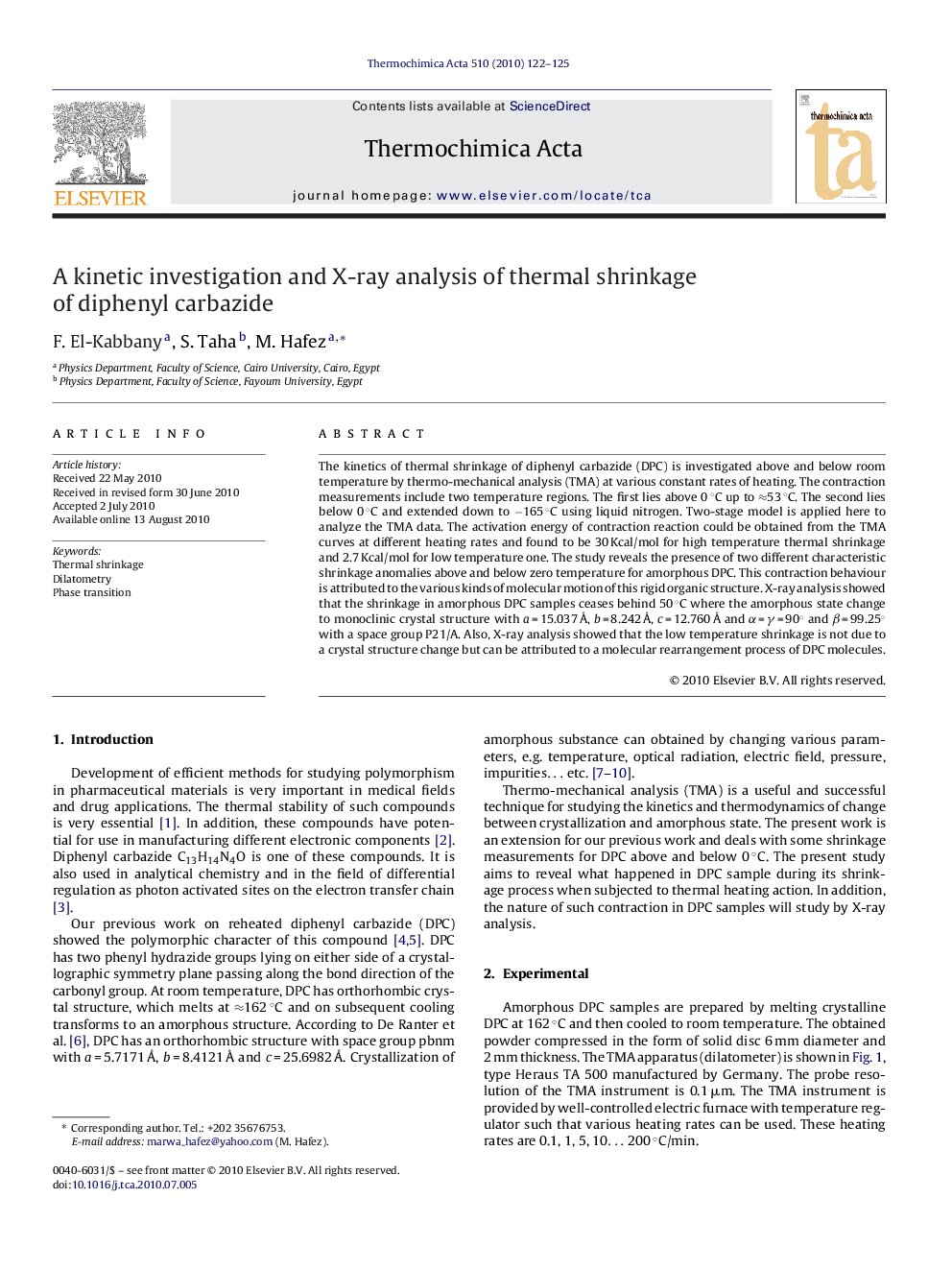| Article ID | Journal | Published Year | Pages | File Type |
|---|---|---|---|---|
| 674748 | Thermochimica Acta | 2010 | 4 Pages |
The kinetics of thermal shrinkage of diphenyl carbazide (DPC) is investigated above and below room temperature by thermo-mechanical analysis (TMA) at various constant rates of heating. The contraction measurements include two temperature regions. The first lies above 0 °C up to ≈53 °C. The second lies below 0 °C and extended down to −165 °C using liquid nitrogen. Two-stage model is applied here to analyze the TMA data. The activation energy of contraction reaction could be obtained from the TMA curves at different heating rates and found to be 30 Kcal/mol for high temperature thermal shrinkage and 2.7 Kcal/mol for low temperature one. The study reveals the presence of two different characteristic shrinkage anomalies above and below zero temperature for amorphous DPC. This contraction behaviour is attributed to the various kinds of molecular motion of this rigid organic structure. X-ray analysis showed that the shrinkage in amorphous DPC samples ceases behind 50 °C where the amorphous state change to monoclinic crystal structure with a = 15.037 Å, b = 8.242 Å, c = 12.760 Å and α = γ = 90° and β = 99.25° with a space group P21/A. Also, X-ray analysis showed that the low temperature shrinkage is not due to a crystal structure change but can be attributed to a molecular rearrangement process of DPC molecules.
